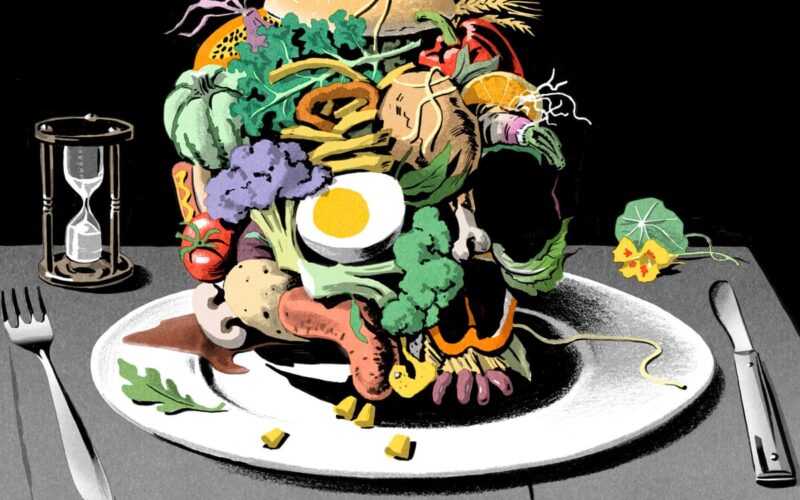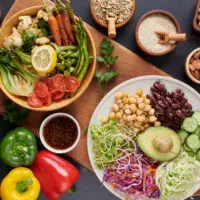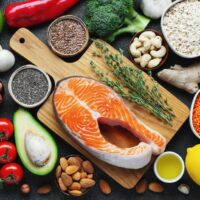Is Our Food Killing Us?

Introduction
We live from one meal to the next. It’s a fact that we wouldn’t be here without food. In order for us to survive, we eat at least three times a day, every day. But what if our food today is actually killing us? That’s right: Our food supply is making us sick and it doesn’t have to be this way!
We live from one meal to the next.
We live in a fast paced world, and we are eating more and more processed food. We are eating less healthy foods that have been around for thousands of years, like fruits and vegetables. We are eating more unhealthy foods than ever before because they taste better to us than what our ancestors ate. This is not good for our bodies or our minds. It is not good for the planet either because it takes so much energy to produce these processed foods and then transport them to your local grocery store or restaurant.
In the last 100 years, food production has gotten bigger and faster.
Food production has increased by 100% in the last 50 years.
This means that despite a growing population and increasing demand for food, our ability to produce more has increased by a staggering amount. In the last 100 years, we have gone from producing about 1 ton of meat per person per year to now producing about 300 pounds of meat per person per year.
Our food source is poisoned with chemicals.
Chemicals used in the agricultural industry are not always labeled as such. The term “pesticide” covers a wide range of chemicals, including fungicides and herbicides. Herbicides kill weeds by inhibiting photosynthesis, while fungicides prevent fungus from growing on fruits and vegetables. Insecticides kill insects by poisoning them or preventing their growth.
Some of these chemicals are known to be harmful to humans but cannot be avoided when eating conventionally grown food; however, others can be avoided with a little extra effort on the part of farmers or consumers. BPA is present in many plastic containers that come into contact with food; studies have shown that it has negative effects on fetal development in mice (1). Phthalates are used as solvents in fragrances and flavorings—they’re found in everything from applesauce to beer—and are known endocrine disruptors (2). It’s safe to assume that most people would rather not eat this stuff!
In addition to pesticides and herbicides, another set of chemicals used regularly in agriculture is referred to as “antimicrobial agents.” These include bht (butylated hydroxytoluene) and phenoxyethanol—both preservatives added during processing so that our food doesn’t spoil too quickly after harvest (3). In other words: they keep things looking fresh even though they might not actually be fresh anymore!
Fast food is convenient but not nutritious.
Fast food is convenient, but not nutritious. The thing that makes fast food so appealing is the fact that it’s quick and easy to get your hands on. You can go through a drive-thru and be back at your desk in under five minutes, or you can pick up a meal in the drive-thru lane at any hour of the day or night. But when you’re looking at this convenience, remember that it comes with a price—not only in terms of how expensive it is (a burger meal can cost you more than $10), but also its impact on your health and well-being.
Fast food meals contain high levels of calories, fat, sugar, sodium (salt), saturated fat and cholesterol—all things which contribute to heart disease and obesity. And although there are some healthier options available on menus now than ever before (Salads! Chicken burgers!), most people still opt for burgers or fried chicken sandwiches because they’re cheaper options with little effort involved.
GMO’s are changing our food supply.
In the 1990s, Monsanto created a genetically modified soybean that was resistant to its herbicide Roundup. This meant farmers could spray their crops with Roundup and kill weeds without harming their soybeans.
The problem started when these genetically modified crops were planted in large quantities throughout the Midwest, where pesticide-resistant bugs started appearing on plants such as corn and cotton. These GMO’s are different from traditional plant breeding techniques because they use genes taken from other species to create new ones that don’t occur naturally in nature.
While there have been many debates about whether or not GMO’s are safe for consumption (and no consensus), we do know that they are changing our food supply—and not always for the better.
Inflammation from what we are eating is causing serious health issues.
Inflammation is a key player in many chronic illnesses. In fact, it’s estimated that more than 70 percent of people have some level of inflammatory disease. Inflammation is the body’s response to injury or infection and can be either good or bad depending on what caused it.
When we eat foods that are inflammatory, they cause damage to the lining of our digestive tract and can increase our risk for colorectal cancer by increasing intestinal permeability (leaky gut). This happens because when we digest food, it releases toxins into our blood stream that make their way throughout our whole body causing damage wherever they go. The brain, which has no blood-brain barrier like other organs do, gets hit with these toxins first which makes us feel foggy headed or depressed after eating any kind of food containing gluten—even if you don’t think you’re sensitive!
Yeast overgrowth is a result of how we eat and how we cook.
It is natural for yeast to live on the skin, in the mouth and in the digestive tract. However, when there is an excess of yeast in your body, it can produce a number of symptoms that you may not realize are related to yeast overgrowth.
When you have too much yeast in your system it can cause:
- Painful gas and bloating after eating (especially at night)
- Headaches or migraines that are worse with food smells or sweets
- Depression or mood swings
- Lack of energy/fatigue
Preservatives on our food are causing us to overeat and gain weight.
We now know that preservatives are added to food to increase shelf life and keep food fresh for longer. But, what we may not know is that these preservatives can cause us to overeat and gain weight.
Preservatives can make us feel hungry when our stomachs are full, which leads us to eat more than we should. This happens because the chemicals interact with receptors in the brain that control hunger signals, causing them to send signals of hunger even though there is enough food in your system.
Preservatives also cause you to crave more food and they make you associate processed foods with feeling good or happy, which means that over time it becomes harder for you not only want but also need those processed foods.
BPA exposure leads to heart disease and cancer, which ultimately cause death.
In a study conducted by the University of Exeter in the United Kingdom, researchers found that exposure to BPA can lead to heart disease, diabetes and cancer. When someone is exposed to BPA it interferes with their hormone receptors, which can increase their risk of developing these conditions. This article goes on to say that “BPA-exposed rats showed accelerated weight gain compared with unexposed rats” (Meyer).
The National Toxicology Program reported that there were adverse effects from exposure on laboratory animals including:
- Prostate enlargement in male rats at all doses tested;
- Reduced sperm production and altered sperm motility in male rats at the highest dose tested;
- Infertility or decreased fertility in female offspring (live births) of parents who were exposed during pregnancy; and
- Tumors (malignant and benign) in various organs among rats and mice at different doses over several years.
We process foods to make them easier to store, produce and ship.
Processed foods are easier to store and ship.
Processing is the process of preparing food for consumption, which often includes cooking. It also may involve treatments that change the appearance, taste, and texture of food.[1] Two types of processing are available: primary (wholesale) or secondary (retail). Primary processing takes raw products directly from farms and turns them into packaged goods; examples include harvesting grain, slaughtering animals and making their meat into sausage or ham, processing milk into cheese or yogurt; secondary processing takes packaged products from wholesale markets and warehouses then sells them to individual consumers.[2] According to some definitions in its more narrow sense, processing can be as simple as grinding up corn kernels into grits[3].
The new cooking techniques of the last century have changed how we eat and shop for food.
In the last century, there has been a shift in how we cook and buy food. Cooking methods have changed from slow-cooking over an open flame to microwaving or frying. These new cooking methods have resulted in less nutritional content in food because of the way they are processed. When you slow-cook your vegetables, you get more nutrients out of them than when you boil them quickly on the stove top.
The new ways of cooking food are faster and easier but they also cost less money because they take less time to prepare than traditional methods do.
Some foods are genetically engineered for better yields or to withstand pesticides or disease.
Genetic engineering is a controversial topic, with some people supporting the use of GMOs and others vehemently opposed. There are two types of GMOs: those that are made by inserting genes from one organism into another, and those that involve the manipulation of existing genes to create a desired trait (such as resistance to pesticide).
Genetically modified organisms can be used to improve crop yields, resist disease and tolerate pesticides. They’re also called genetically engineered or transgenic. While many crops have been genetically altered for these reasons since the 1980s, consumer concerns about potential health risks remain high today.
Food inside our bodies can cause inflammation, a key player in many chronic illnesses.
Inflammation is a key player in many chronic illnesses. It’s also the result of eating certain foods. Inflammatory foods include:
- Refined sugars, such as white sugar, brown sugar and other sweeteners
- High-glycemic carbohydrates like white flour and potatoes
- Trans fats like margarine or vegetable shortening
- Omega-6 fatty acids from vegetable oils such as soybean oil, corn oil and sunflower oil
GMO foods don’t need to be labeled as such in the US.
In the United States, it’s not required to label GMO foods. That’s because the FDA has determined that genetically engineered food does not pose a risk to human health. In Canada and Europe, however, GMO foods are required to be labeled as such by law.
The European Union (EU) has been particularly strict about this issue: it banned all imports of American corn after trace amounts were found in an EU shipment from Mexico in 2008. The ban was lifted two years later when American farmers began using a new process that made GM corn much harder for foreign inspectors to detect—and thus “provide[d] sufficient consumer confidence” according to the European Commission’s Food Safety Unit (FCSU). To date there have been no further incidents involving imported corn shipments into Europe.*
In Thailand there was an effort underway earlier this year when activists called on Prime Minister Yingluck Shinawatra “not only stop issuing approvals [for] new GMOs but also recall all existing approvals”—which would mean recalling more than 50 different types of modified seeds including rice, papaya trees and sugar cane—but nothing came out of it.*
Australia requires labels on genetically modified ingredients if they occur at greater than 1% concentration; New Zealand sets its limit at 0.9%.*
We’re exposed to more yeast than we used to be.
Yeast is everywhere. In fact, it’s in our food, on our skin and even in our bodies.
It’s been this way ever since we started farming thousands of years ago. And while yeast has always been present in the environment, the modern world has made it easier for us to be exposed to more of it than ever before.
In addition to eating more yeast, we’re using it in more products, including vaccines and medicines.
You already know that yeast is an ingredient in bread, but did you also know that it’s used to make beer and wine?
We’re consuming more yeast than ever before. In addition to eating more yeast, we’re using it in more products, including vaccines and medicines. The U.S. Food & Drug Administration (FDA) estimates the number of edible products containing live yeasts on grocery store shelves has increased by 400 percent since 2010—and that’s just for starters!
Overall, our food today is a very different thing than what it was 100 years ago
Over the last 100 years, food has changed in many ways. Food is not as fresh or nutritious as it used to be, and it’s not as safe or natural. Food that is processed and packaged often contains chemicals that may be harmful for you or your children. It’s important to think about where your food comes from and how it was grown or raised before you eat it.
Conclusion
In conclusion, our food today is a very different thing than what it was 100 years ago. It’s more processed, more chemically altered and has less nutrition. But there are ways to make changes in your diet that will help you avoid these problems while still getting all the nutrients you need.



